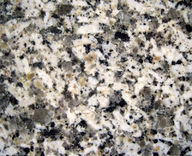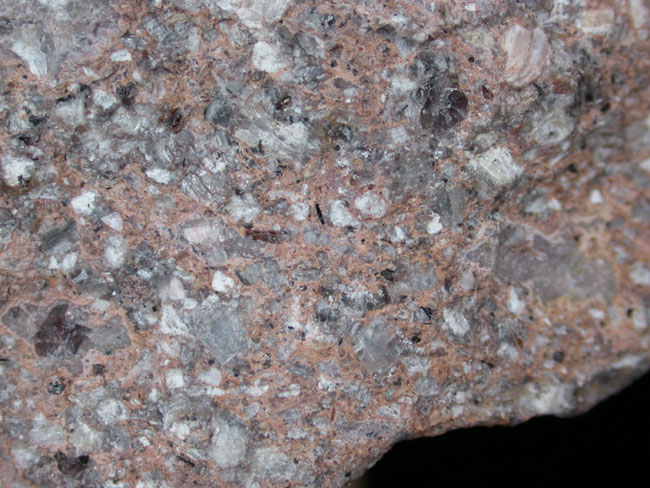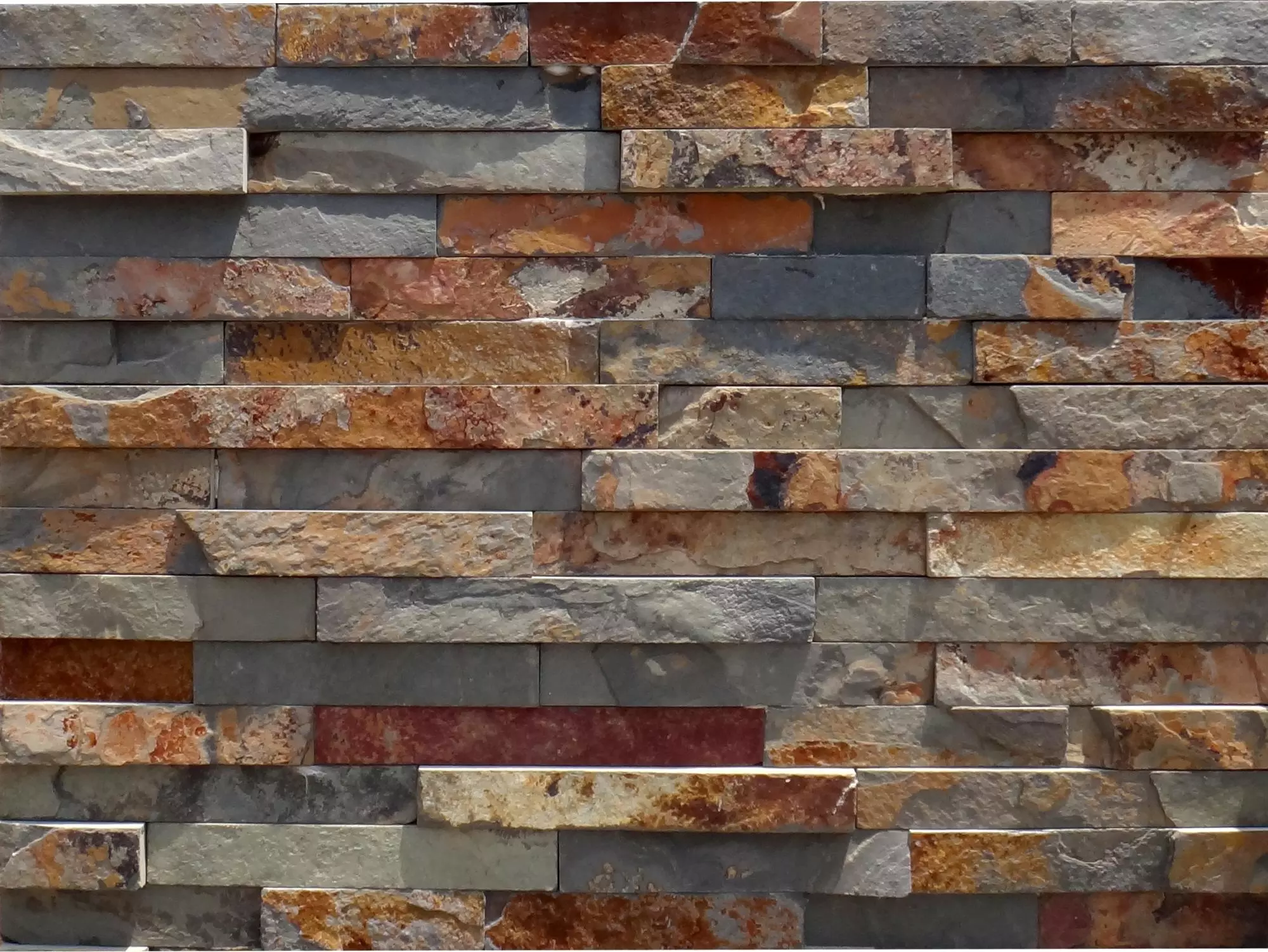25 How Are Igneous Rocks Classified?
This page focuses on igneous rocks and gives you the background needed to understand the terms used in the igneous rock classification table (at the bottom of this page).
Intrusive and Extrusive Igneous Rocks
Igneous textures include the rock textures occurring in igneous rocks. Igneous textures are used by geologists in determining the mode of origin igneous rocks and are used in rock classification. There are seven main types of textures: phaneritic, aphanitic, porphyritic, glassy, vesicular, pyroclastic and pegmatitic.
When magma cools slowly underground and solidifies there, it usually grows crystals big enough to be seen easily with the naked eye. These visible crystals comprise the whole rock. Phaneritic (phaner = visible) textures are typical of intrusive igneous rocks crystallized slowly below Earth’s surface. As magma cools slowly the minerals have time to grow and form large crystals. The minerals in a phaneritic igneous rock are sufficiently large to see each individual crystal with the naked eye. Examples of phaneritic igneous rocks are gabbro, diorite and granite, all intrusive rocks. Phaneritic texture is sometimes referred to as coarse-grained igneous texture. Granite, the most well known example of an intrusive igneous rock, has a phaneritic texture. See image of granite surface below.

Granite is made of four minerals, all visible to the naked eye: feldspar (white), quartz (translucent), hornblende (black), and biotite (black, platy).
Sometimes an intrusion of magma that is crystallizing slowly underground releases large amounts of hot water. The water is released from the magma as extremely hot fluid with lots of chemical elements dissolved in it. This hydrothermal fluid gets into cracks and voids in the earth’s crust, and as it cools it may grow very large minerals from the dissolved chemical elements. A rock consisting of such large minerals is said to have a pegmatitic texture, which means the average mineral size is greater than 1 cm in diameter (and sometimes much larger). The name of an igneous rock with a pegmatitic texture is pegmatite. Pegmatites are commonly found in or near the margins of bodies of granite. See images below.


Igneous rocks make up most of the rocks on Earth. Most igneous rocks are buried below the surface and covered with sedimentary rock, or are buried beneath the ocean water. In some places, geological processes have brought igneous rocks to the surface.
Figure 3 below shows a landscape in California’s Sierra Nevada made of granite that has been raised to create mountains.

Igneous rocks are called extrusive when they cool fast and solidify above the surface. These rocks usually form from a volcano, so they are also called volcanic rocks (figure 4).They have so-called pyroclastic texture.

Extrusive igneous rocks cool much more rapidly than intrusive rocks. There is little time for crystals to form, so extrusive igneous rocks have tiny crystals (figure 5). Rapid cooling results in an aphanitic igneous texture, in which few or none of the individual minerals are big enough to see with the naked eye. Aphanitic (a = not, phaner = visible) rocks in contrast to phaneritic rocks, typically form from lava which crystallize rapidly on or near Earth’ surface. Sometimes it is referred to as a fine-grained texture. .

Figure 5. Cooled lava forms basalt with no visible crystals. Why are there no visible crystals?
Some lava flows, however, are not purely fine-grained. If some mineral crystals start growing while the magma is still underground and cooling slowly, those crystals grow to a large enough size to be easily seen, and the magma then erupts as a lava flow, the resulting texture will consist of coarse-grained crystals embedded in a fine-grained matrix. This texture is called porphyritic. See image below.

If lava has bubbles of gas escaping from it as it solidifies, it will end up with “frozen bubble holes” in it. These “frozen bubble holes” are called vesicles, and the texture of a rock containing them is said to be vesicular. See image below.
If so many bubbles are escaping from lava that it ends up containing more bubble holes than solid rock, the resulting texture is said to be frothy. Pumice is the name of a type of volcanic rock with a frothy texture.
If lava cools extremely quickly, and has very little water dissolved in it, it may freeze into glass, with no minerals (glass by definition is not a mineral, because it does not have a crystal lattice). Such a rock is said to have a glassy texture. Obsidian is the common rock that has a glassy texture, and is essentially volcanic glass. Obsidian is usually black. See below.

Now let us briefly consider textures of tephra or pyroclastic rocks. Like lava flow rocks, these are also extrusive igneous rocks. However, instead of originating from lava that flowed on the earth’s surface, tephra is volcanic material that was hurled through the air during a volcanic eruption. A pyroclastic rock made of fine-grained volcanic ash may be said to have a fine-grained, fragmental texture. Volcanic ash consists mainly of fine shards of volcanic glass. It may be white, gray, pink, brown, beige, or black in color, and it may have some other fine crystals and rock debris mixed in. The term “fine-grained, fragmental” is easy to confuse with the term fine-grained (aphanitic). An equivalent term that is less ambiguous is tuffaceous. Rocks made of volcanic ash are called tuff.

Brick wall made of tuff
Sometimes magma moving upward traps pieces of surrounding rocks. These trapped fragments are called “xenoliths”. They provide geologists with information about the composition of deep layers in Earth’s interior.
3D Model of Xenolith: https://sketchfab.com/3d-models/arizona-xenolith-in-basalt-e52ec4efb7304d05ac60278c959710cd
Igneous Rock Textures
Igneous textures include the rock textures occurring in igneous rocks. Igneous textures are used by geologists in determining the mode of origin igneous rocks and are used in rock classification. There are seven main types of textures; phaneritic, aphanitic, porphyritic, glassy, vesicular, pyroclastic and pegmatitic.
Good short summary of igneous rocks textures:
http://www.brooklyncollegegeology.com/fourth/textures.htm
Good set of examples:
https://igg.georockme.com/visual-bank
Igneous Rock Compositions
The most common igneous compositions can be summarized in three words: mafic (basaltic), intermediate (andesitic), and felsic (granitic).
Felsic composition is higher in silica (SiO2) and low in iron (Fe) and magnesium (Mg). Mafic composition is higher in iron and magnesium and lower in silica. Intermediate compositions contain silica, iron, and magnesium in amounts that are intermediate to felsic and mafic compositions.
Composition and Color
Composition influences the color of igneous rocks. Felsic rocks tend to be light in color (white, pink, tan, light brown, light gray). Mafic rocks tend to be dark in color (black, very dark brown, very dark gray, dark green mixed with black). The color distinction comes from the differences in iron and magnesium content. Iron and, to a lessor extent, magnesium give minerals a darker color. Intermediate igneous rocks tend to have intermediate shades or colors (green, gray, brown). They are in between felsic and mafic types.
The association between color and composition is useful because before you can name and interpret an igneous rock you need to determine both its texture AND its composition. If you have an aphanitic igneous rock, which has no crystals big enough to see without a microscope, you can estimate its composition based on its color: pink or nearly white, felsic; medium gray, intermediate; very dark or black, mafic.
This color rule works most of the time but there are two problems that you need to keep in mind. First, the rule does not work for glassy igneous rocks. Obsidian, which is volcanic glass, is usually black, even though it has a felsic composition. That is because a tiny amount of iron, too little to color minerals very darkly, can color glass darkly.
The second problem is that when igneous rocks have been exposed to air and water for a long time, they start to weather, which changes their color. Geologists working in the field carry a rock hammer, so they can break off the weathered, outer parts of rocks to see the “fresh,” unweathered rock inside.
If you can see and identify the minerals in an igneous rock, you can gain further information about the igneous composition. Igneous rocks with quartz in them are usually felsic. Igneous rocks with olivine in them are usually mafic. Igneous rocks with neither quartz nor olivine in them are most commonly intermediate.
Description of Igneous Rocks
Once you have determined the texture and composition of an igneous rock, you can name it and you can also say something important about how it formed. For example, a coarse-grained, felsic igneous rock is not only a granite, it is an intrusive igneous rock that formed from slow cooling and crystallization of a body of magma within the earth’s crust. The intrusion of large bodies of granite—batholiths—is usually part of the origin of a mountain range. Similarly, a fine-grained, mafic igneous rock is not only a basalt, it is an extrusive igneous rock that formed from rapid cooling and crystallization of a lava flow at earth’s surface.
Igneous Rock Classification
Pegmatitic Texture (Extremely Coarse-Grained)Originates from water-rich intrusions, which cool and crystallize underground |
||
|---|---|---|
| Composition | Most Common Minerals | Rock Name |
| felsic | Na-plagioclase, orthoclase, quartz, biotite, amphibole, muscovite | pegmatite |
Phanertitic Texture (Coarse-Grained)Originates in deep intrusions, which cool and crystallize slowly underground |
||
| Composition | Most Common Minerals | Rock Name |
| felsic | Na-plagioclase, orthoclase, quartz, biotite, amphibole, muscovite | granite |
| intermediate | Na-plagioclase, quartz, orthoclase, amphibole, biotite | granodiorite |
| Na-plagioclase, amphibole, pyroxene, biotite | diorite | |
| mafic | Ca-plagioclase, pyroxene, olivine, amphibole | gabbro |
| ultramafic | olivine, pyroxene | peridotite |
Aphanitic Texture (Fine-Grained)Originates in lava flows (or very shallow intrusions), which cool rapidly |
||
| Composition | Most Common Minerals | Rock Name |
| felsic | Na-plagioclase, orthoclase, quartz, biotite, amphibole, muscovite | rhyolite |
| intermediate | Na-plagioclase, quartz, orthoclase, amphibole, biotite | dacite |
| Na-plagioclase, amphibole, pyroxene, biotite | andesite | |
| mafic | Ca-plagioclase, pyroxene, olivine, amphibole | basalt |
Vesicular, frothy Texture (Porous, Pumiceous)Originates in gas-charged volcanic eruptions, commonly pyroclastic |
||
| Composition | Most Common Minerals | Rock Name |
| felsic | glass (may contain a few minerals typical of felsic rocks) | pumice |
| mafic | glass (may contain a few mineral typical of mafic rocks) | scoria |
| Note: Basalt with fewer holes, known as vesicles, is called vesicular basalt. Scoria has more holes and may be black or red in color. | ||
Glassy TextureOriginates from cooling too rapid to allow crystal lattices to form |
||
| Composition | Most Common Minerals | Rock Name |
| felsic to mafic | glass (no minerals) | obsidian |
| Note: Obsidian that is transparent at thin edges and has good conchoidal fracture is probably felsic. | ||
Fragmental Texture—Coarse (Contains Large Rock Fragments)Originates from pyroclastic (explosive) eruptions |
||
| Composition | Most Common Minerals | Rock Name |
| felsic to mafic | variable (depending on rock fragments and ash content) | volcanic breccia |
Fragmental Texture—Fine (Mainly Volcanic Ash)Originates from pyroclastic (explosive) eruptions |
||
| Composition | Most Common Minerals | Rock Name |
| felsic | may contain a few minerals typical of felsic rocks | rhyolitic tuff |
| medium | may contain a few minerals typical of intermediate rocks | andesitic tuff |
| mafic | may contain a few minerals typical of mafic rocks | |
